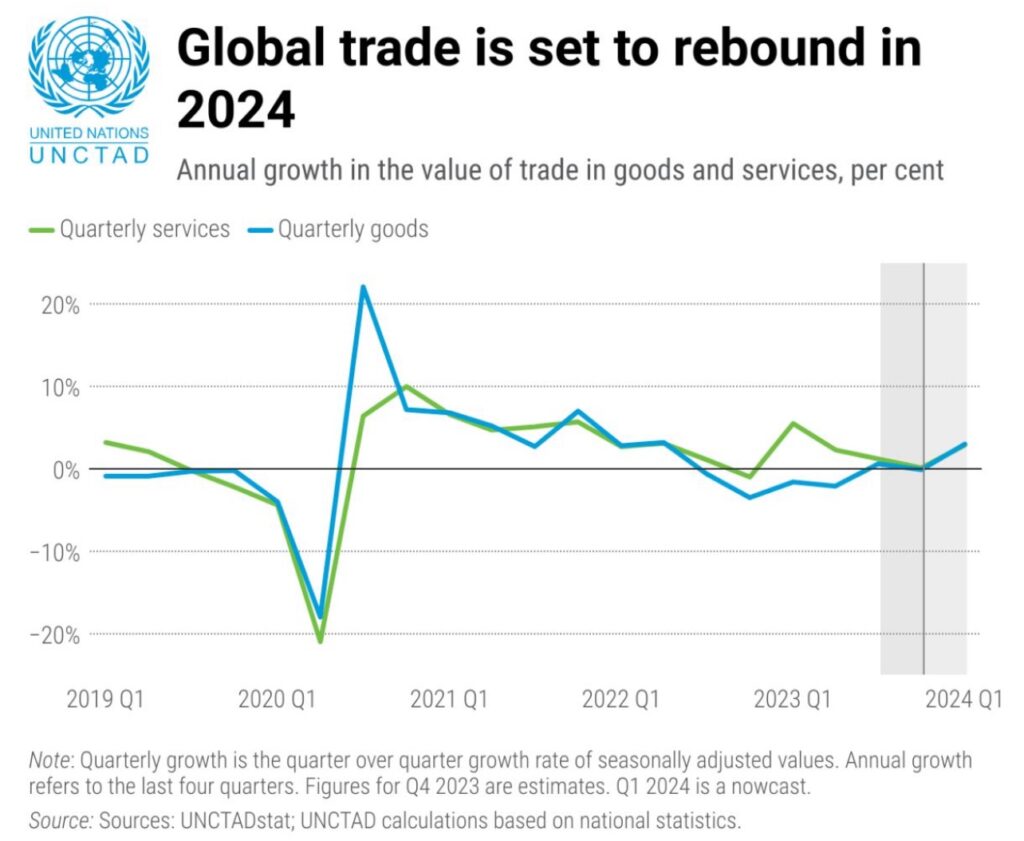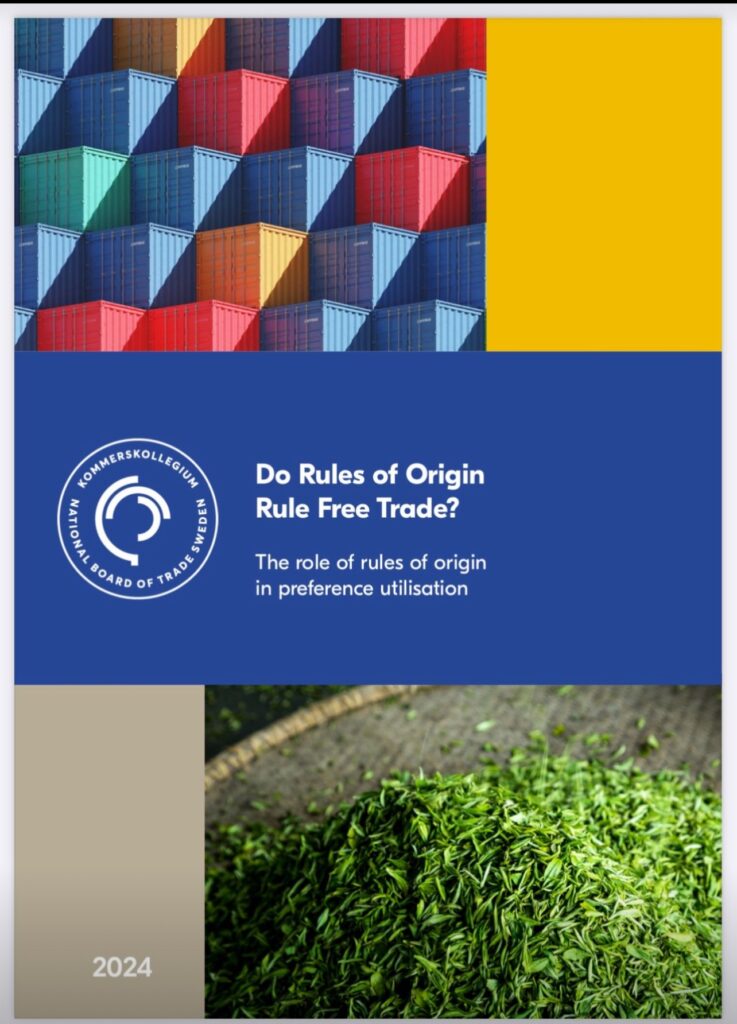UNCTAD’s Global Trade Update shows encouraging signs amidst persistent challenges.
The overall outlook for trade in 2024 is positive, with increasing demand for environmental goods, especially electric cars, set to play a crucial role in driving growth.

✅ International trade is expected to rebound in 2024 after experiencing declines for several quarters.
✅ Preliminary figures indicate a $1 trillion contraction in global trade in 2023, driven primarily by subdued demand in developed nations and weaker trade within East Asia and Latin American regions.
✅ While trade in goods decreased during 2023, trade in services continued to grow, signalling resilience amidst challenging conditions.
Did you know that 90% of commodities are transported by ocean globally? Maersk, a leading logistics and transportation company, transports 1 in 5 of these containers and owns 64 terminals complemented by a vast network of warehouses globally. Learn about the risks faced in this industry and what Maersk is doing to address them by watching this informative video.

Look at this video to find out howMaersk grew its shipping empire and how it’s evolving, click here: https://www.cnbc.com/last-call/
Source:CNBC
The Swedish National Board of Trade has presented an interesting research report about utilization of Free Trade Agreements (FTA) & the complications around Rules of Origin (ROO).

Christopher Wingård, one of the authors of the report, says: ”At the beginning of the work, we were convinced that we would be able to connect specific rules of origin with a high or low utilization of the agreements, to find a pattern and be able to say which rules of origin are easy or difficult to use. However, we could not identify any such relationship. Instead, we found that a certain rule of origin in one agreement could be connected with a high utilization, but the same rule could have a much lower utilization in another agreement”.
Read the report here: national Board of Trade: FTA research report






You must be logged in to post a comment.